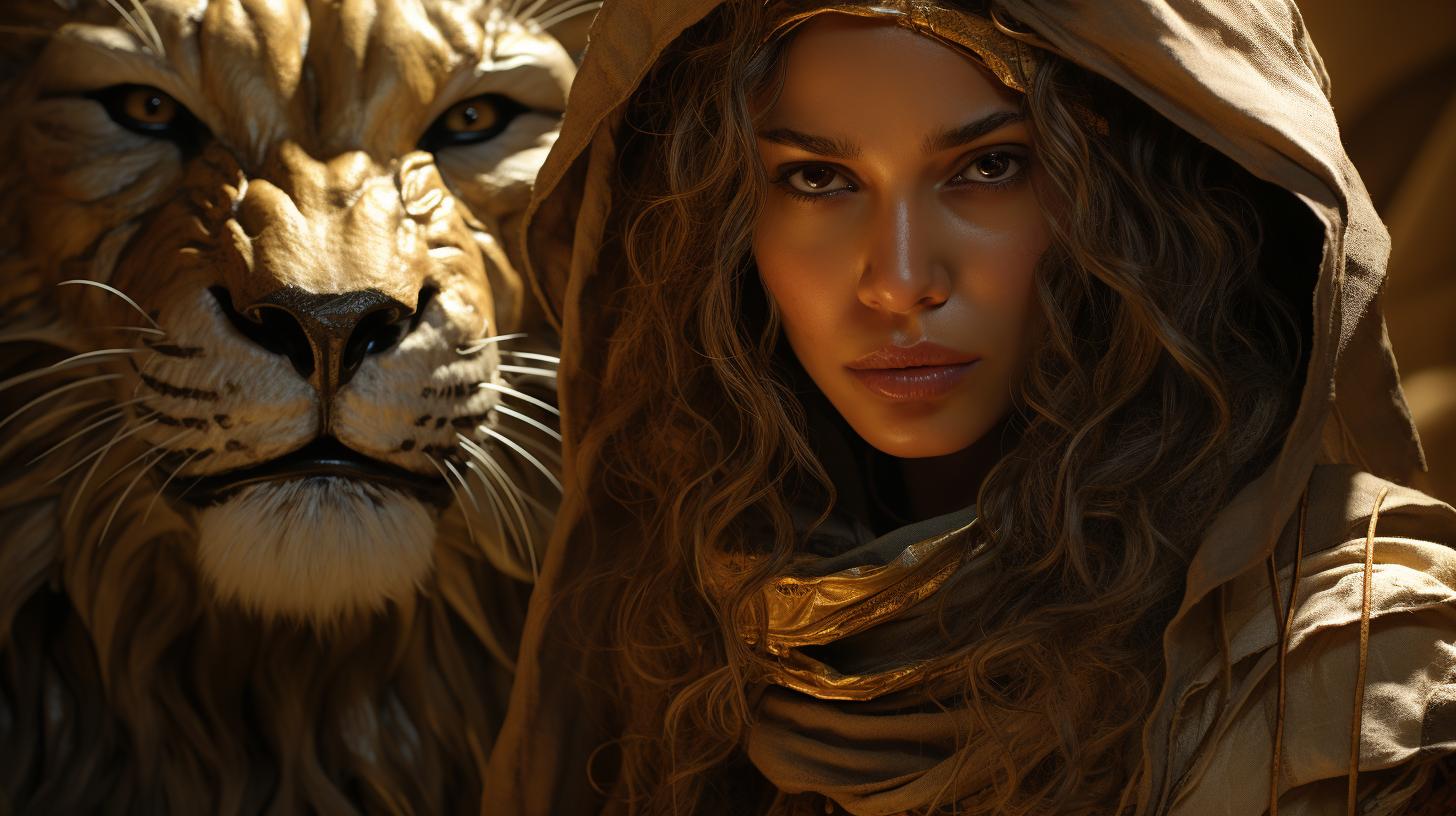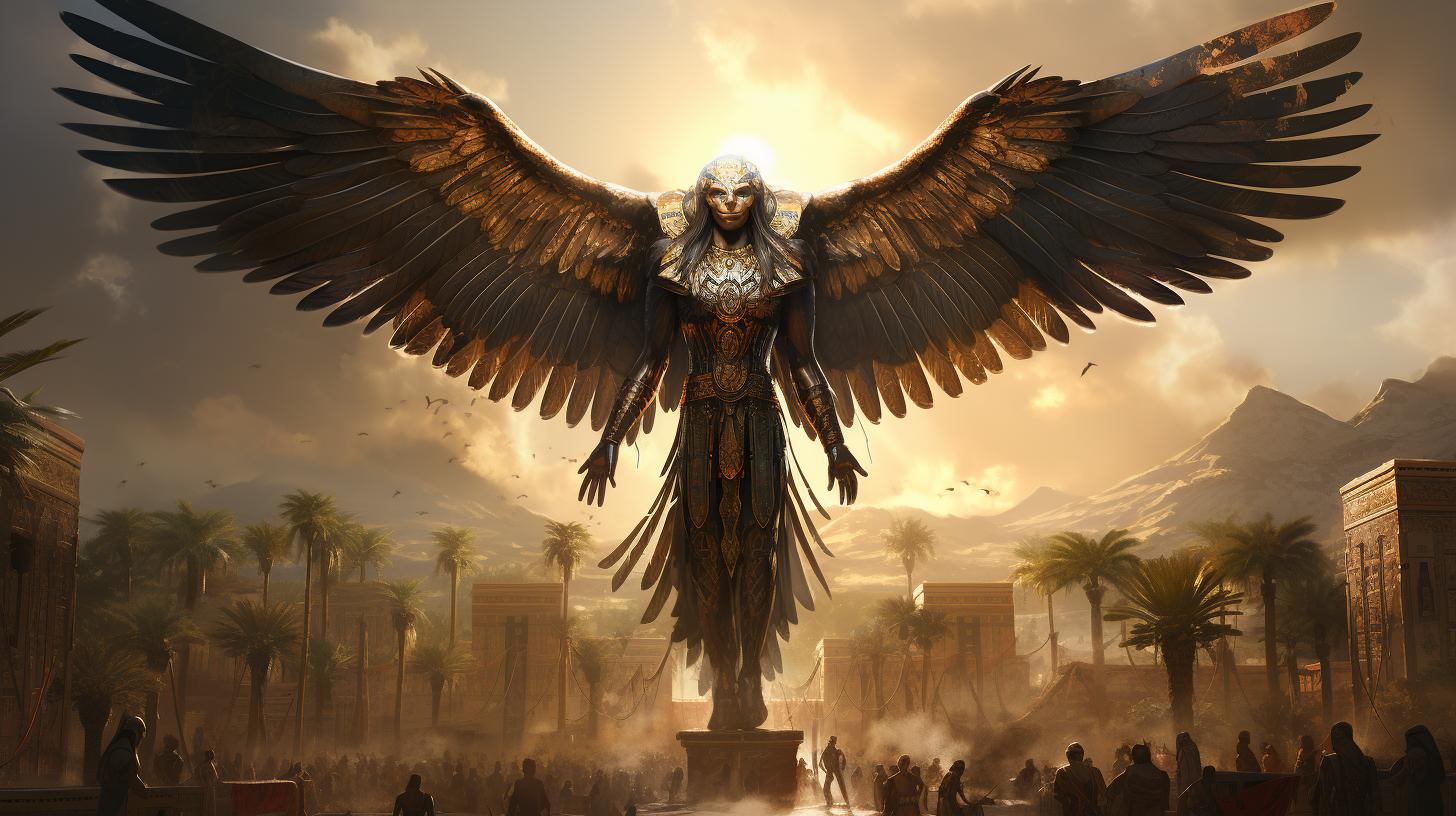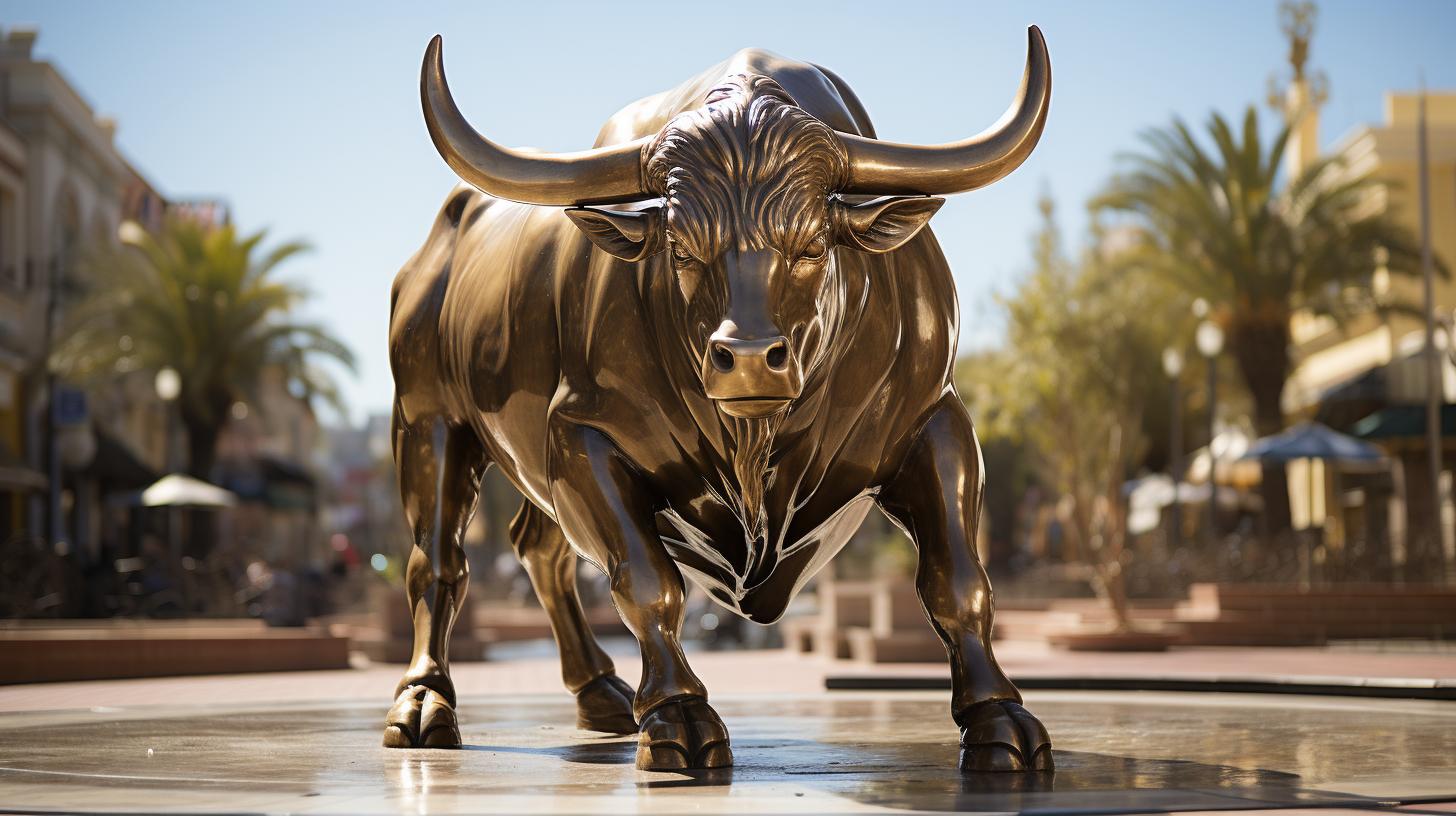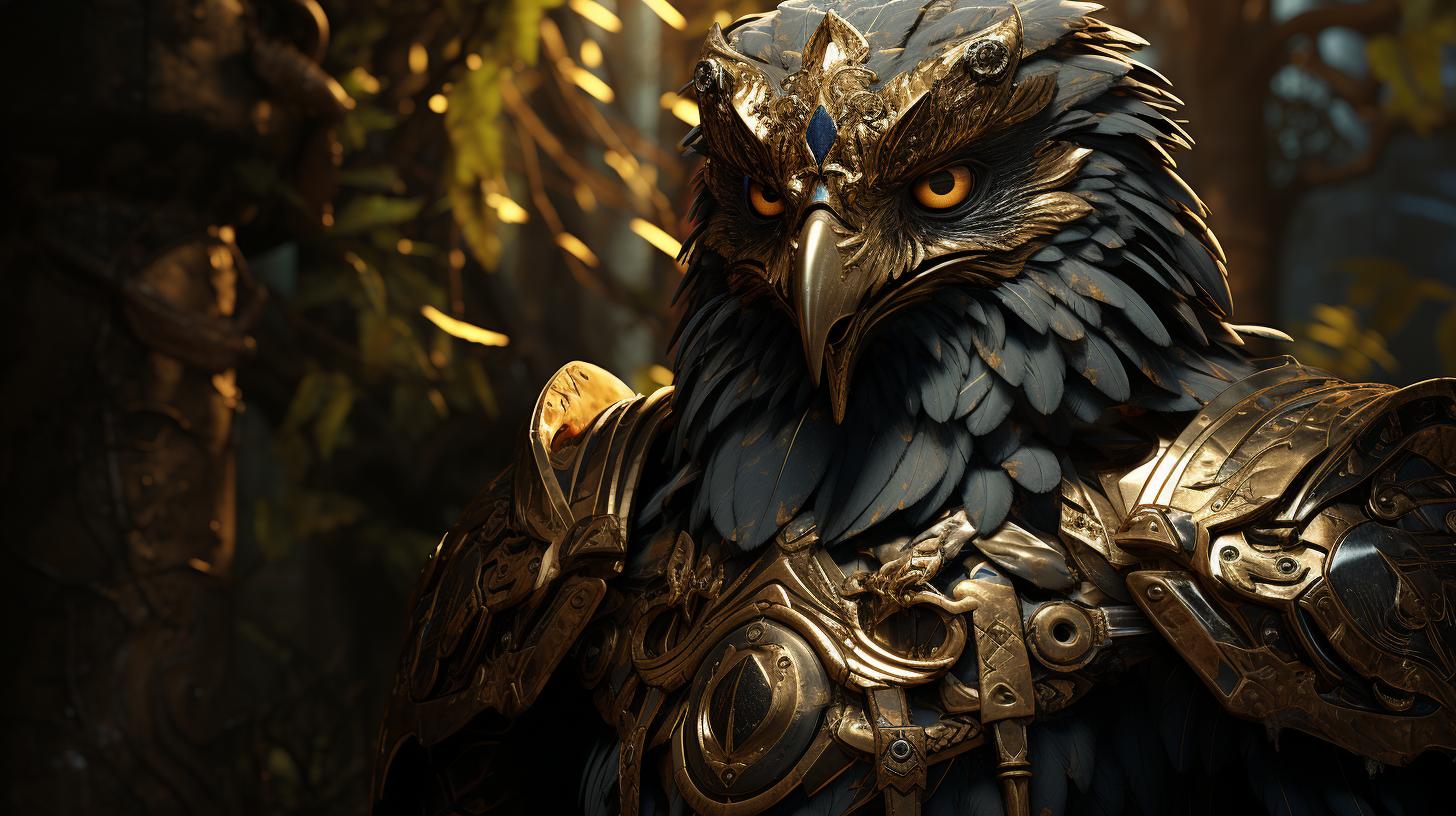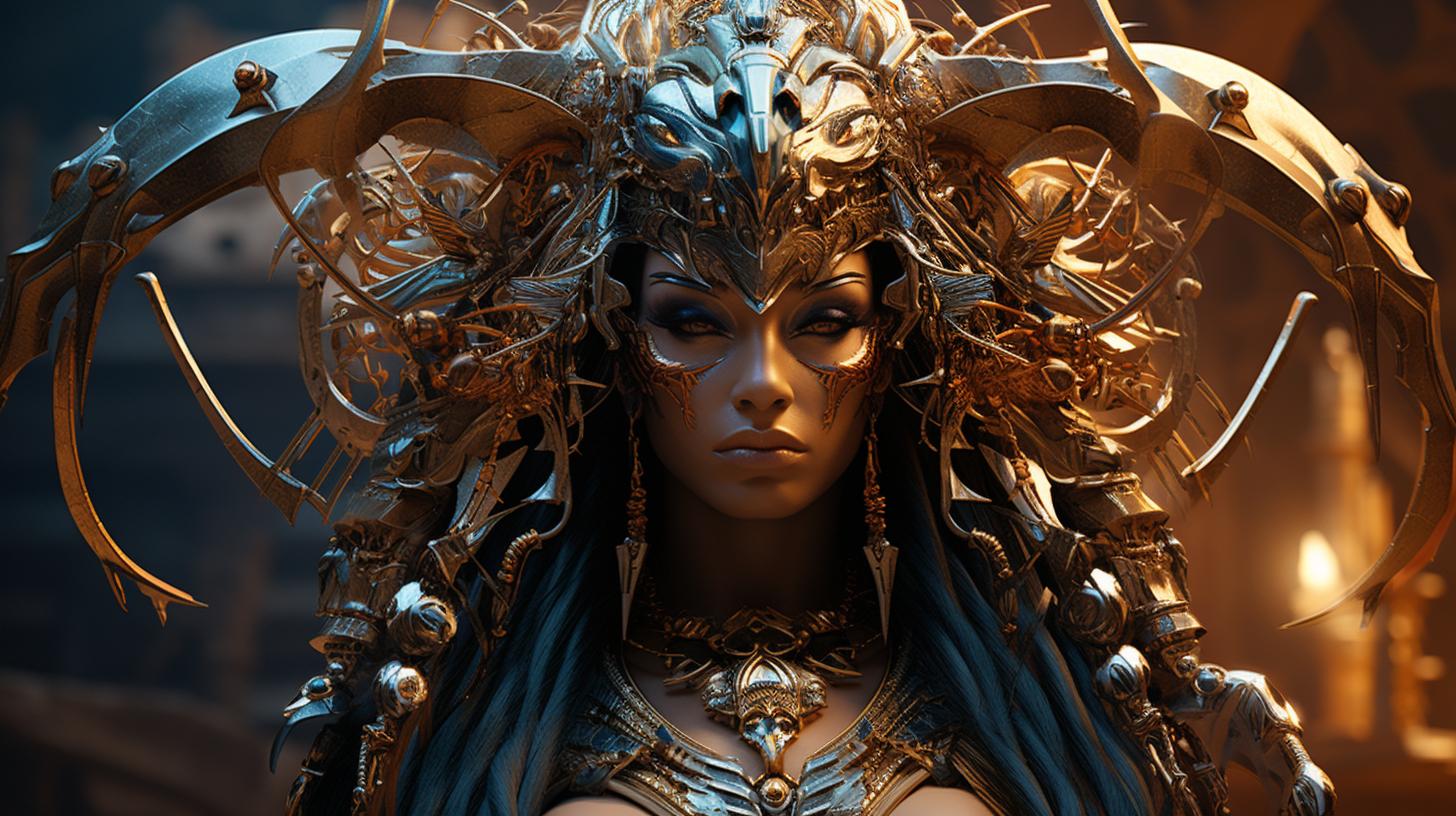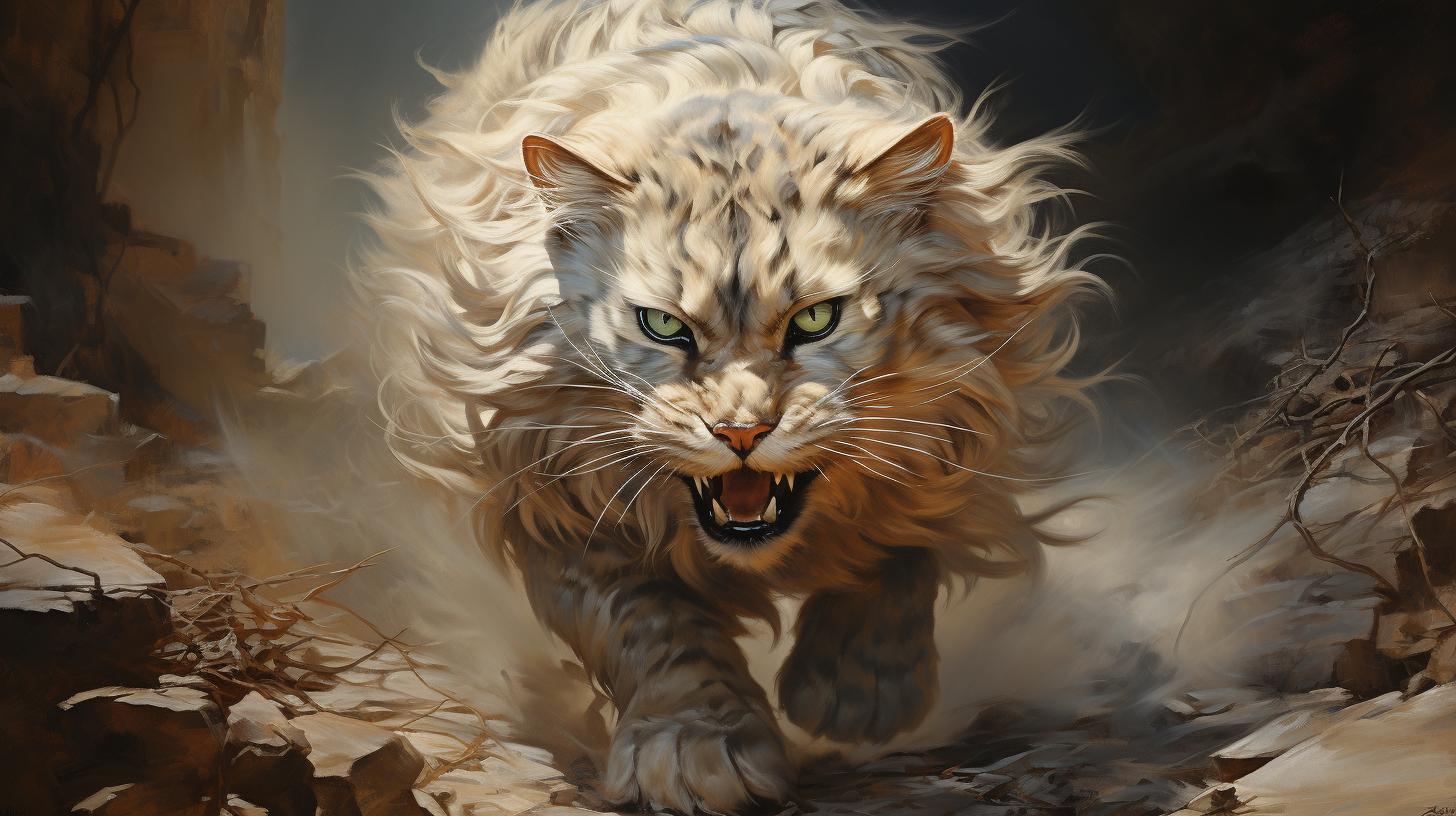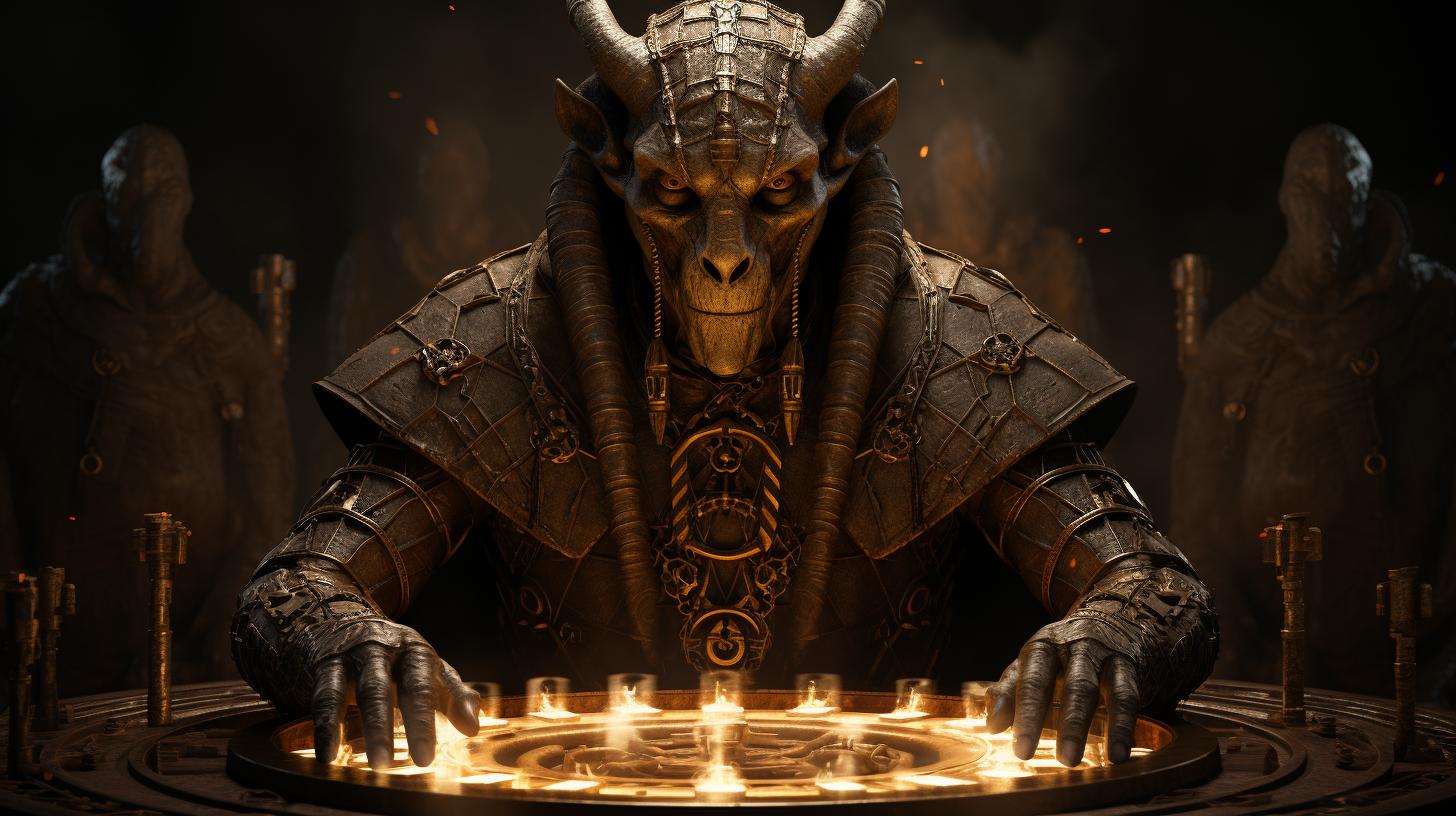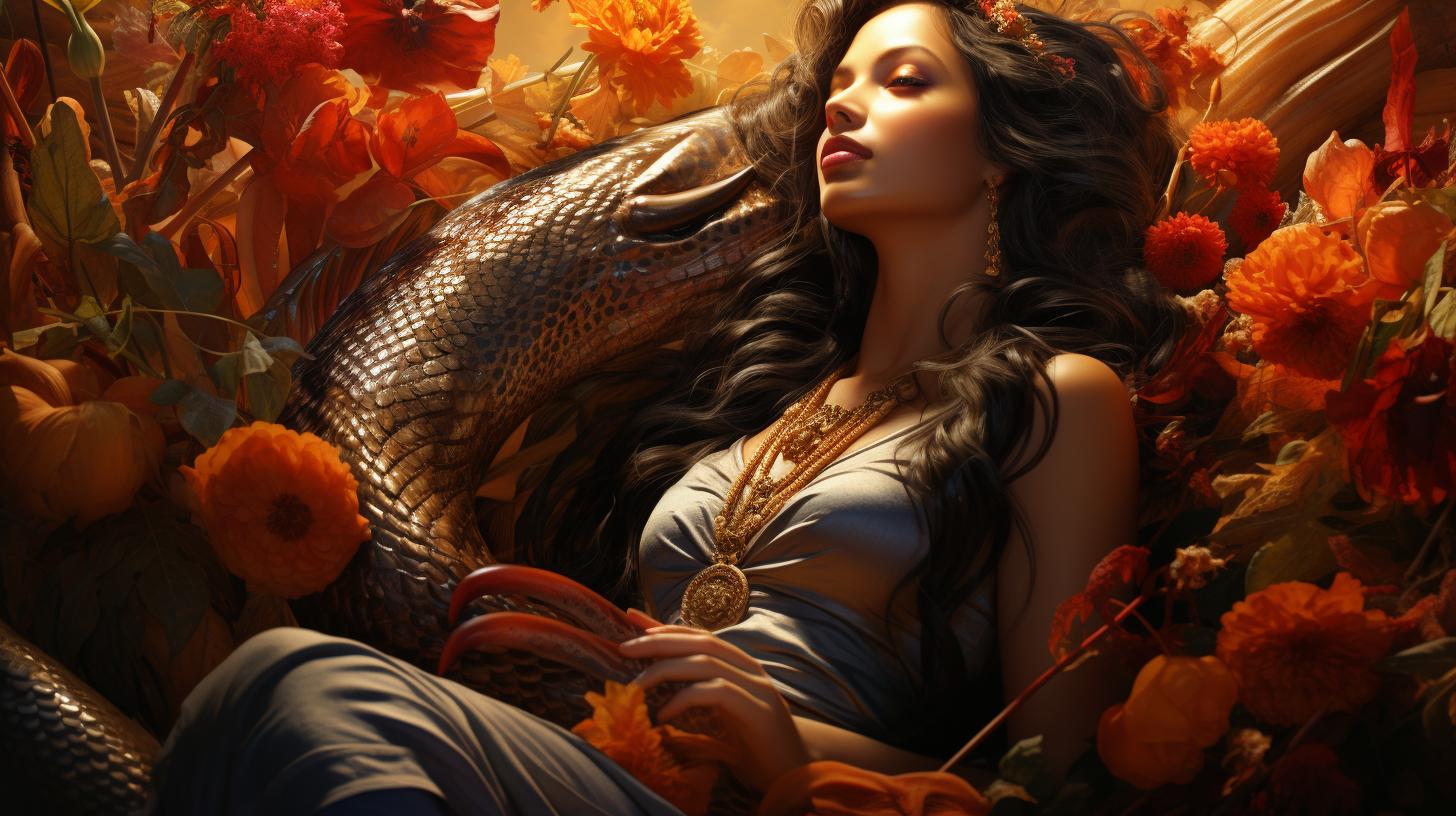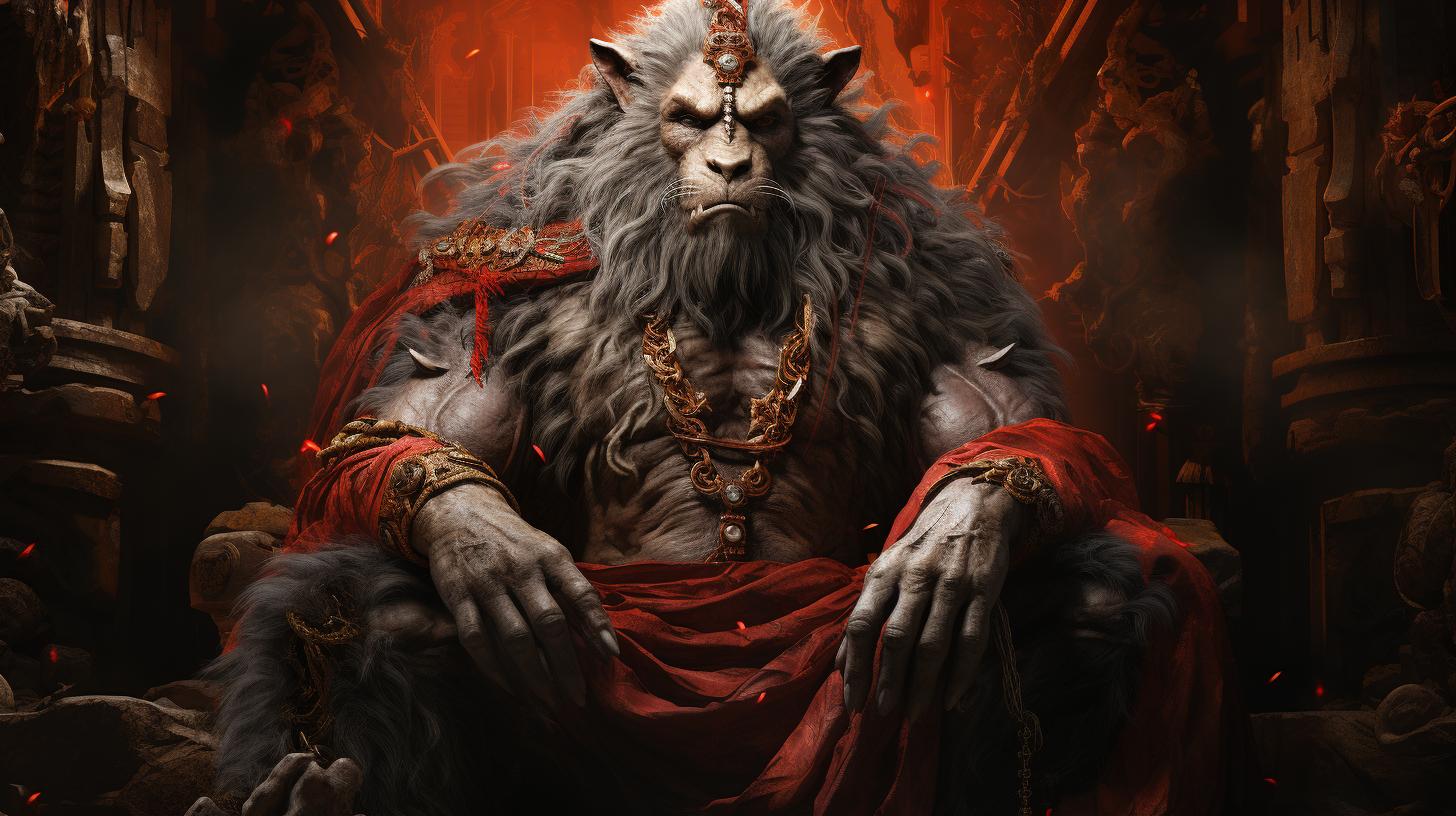Pakhet Egyptian Goddess: Unveiling the Fierce Warrior and Divine Protector of Ancient Egypt
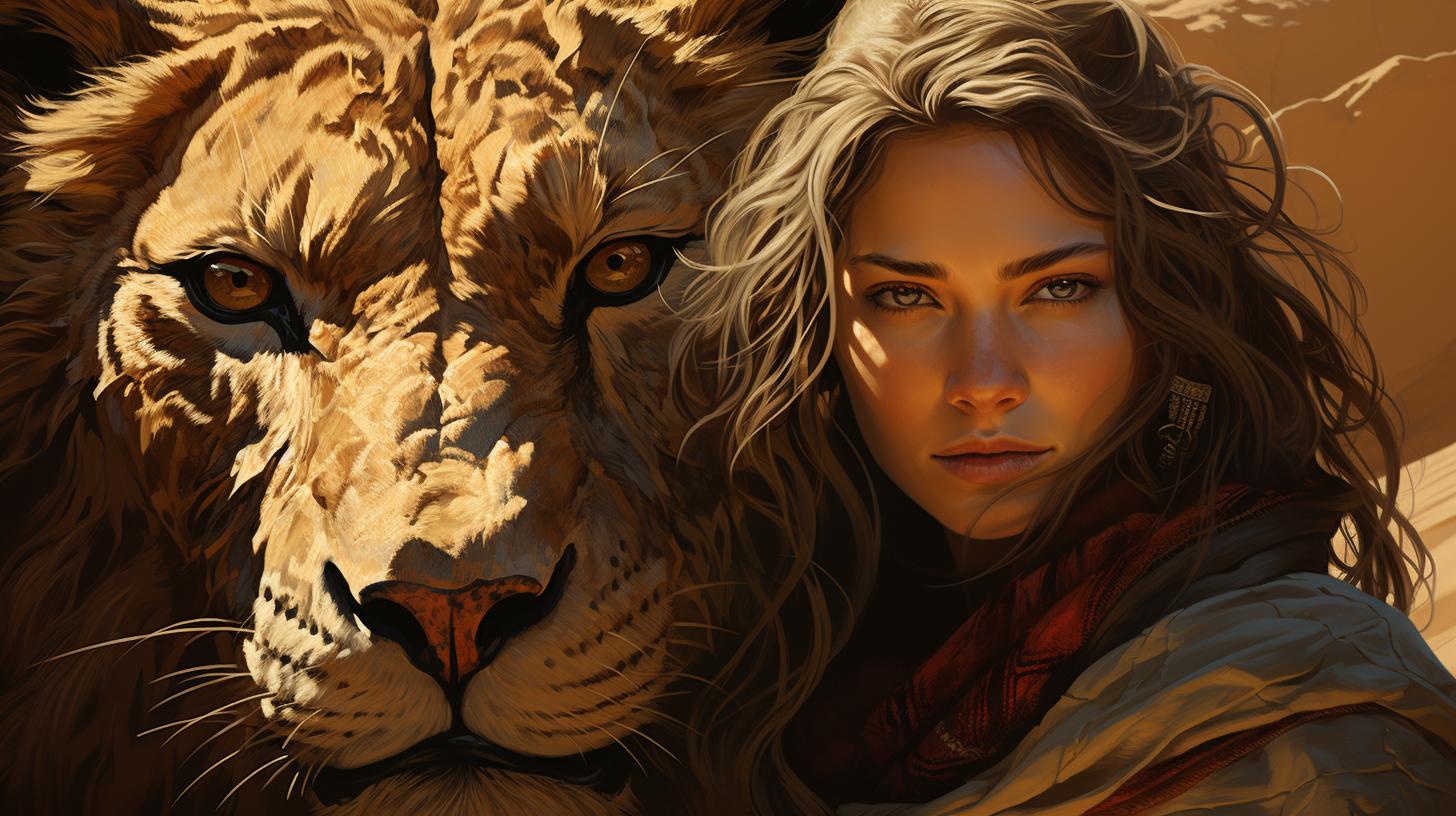
Pakhet Egyptian goddess, also known as Lady Pakhet, was a revered deity in ancient Egypt. Represented as a lioness, she was associated with war, hunting, and storms. Her titles included ‘The Ripper’ and ‘The Night Huntress’.
Queen Hatshepsut built a temple dedicated to Pakhet, showcasing her strength and protection of Egypt. Pakhet’s significance increased during Hatshepsut’s reign, and she was often merged with goddesses such as Bastet and Sekhmet. Pakhet was also worshipped in small home shrines, offering protection against plagues and aiding pregnant women.
Her legacy and symbolism continue to fascinate researchers to this day.
The Origins of Pakhet: Exploring the Ancient Egyptian Goddess
Pakhet, an enigmatic goddess of ancient Egypt, emerges from the depths of mythology and ancient beliefs. Understanding her origins requires delving into the rich mythology and background of Egyptian deities.
The Mythology and Background of Egyptian Deities
Egyptian mythology is a tapestry of gods and goddesses, each with their distinct roles and attributes.
They were revered and worshipped by the ancient Egyptians, who believed in their divine powers and ability to influence various aspects of life.
The Role of Pakhet in Ancient Egyptian Beliefs
Among the vast pantheon of Egyptian deities, Pakhet held a significant role.
She was revered as a fierce and fearless warrior goddess, associated with war, hunting, and storms. Her presence in ancient Egyptian beliefs suggests her importance in their society.
As the divine lioness, Pakhet was a symbol of power, strength, and ferocity.
She embodied the primal instinct of the hunt and was seen as a protector of Egypt against external threats and dangers.
Pakhet’s titles, such as ‘The Ripper’ and ‘The Night Huntress,’ further emphasize her role as a formidable deity.
These epithets evoke images of a relentless predator, ready to defend and safeguard the ancient Egyptians.
While Pakhet possessed a distinct persona within Egyptian beliefs, she was also associated and sometimes merged with other goddesses like Bastet and Sekhmet. These connections and amalgamations further enriched the multifaceted nature of Pakhet’s character.
The study of Pakhet’s role in ancient Egyptian beliefs provides valuable insights into their cosmology, religious practices, and societal values during that time.
Pakhet: The Fierce and Fearless Warrior Goddess
In ancient Egyptian mythology, Pakhet was revered as a powerful and fearless deity associated with war, hunting, and storms. This section explores her divine qualities and the symbolism behind her titles.
Let’s delve into the intriguing aspects of Pakhet’s persona as the divine lioness and her connection to the realms of war, hunting, and storms.
Pakhet as the Divine Lioness
At the heart of Pakhet’s representation was her embodiment as a majestic lioness. This ferocious feline symbolized her strength, agility, and predatory nature. Often depicted with the head of a lioness and the body of a woman, she exuded a regal and commanding presence that instilled both awe and reverence amongst ancient Egyptians.
Pakhet’s Connection to War, Hunting, and Storms
As the goddess of war, Pakhet was associated with the fiercest battles and her divine protection was sought by warriors on the battlefield. She instilled courage and served as a guardian for those in times of conflict.
Her formidable presence extended to the realm of hunting, where she was believed to enhance hunting skills and bless expeditions with a successful outcome.
In addition to her connection to war and hunting, Pakhet was also revered as a goddess of storms.
The ferocity of thunderstorms and sandstorms resonated with her divine essence, embodying her might and power. Ancient Egyptians believed that she controlled these natural phenomena, and her worshipers sought her favor to protect them from the wrath of these tempestuous forces.
The Symbolism of Pakhet’s Titles: ‘The Ripper’ and ‘The Night Huntress’
Pakhet’s titles, ‘The Ripper’ and ‘The Night Huntress,’ were attributed to her fearsome reputation and relentless nature. ‘The Ripper’ emphasized her ability to tear through obstacles and adversaries, leaving destruction in her wake.
‘The Night Huntress’ alluded to her nocturnal hunting prowess, as she was believed to be at her most potent during the darkness of the night.
These titles not only reflected Pakhet’s wild and untamed power but also highlighted her role as a formidable protector and warrior, ready to defend and preserve that which was sacred.
- Pakhet as the Divine Lioness
- Pakhet’s Connection to War, Hunting, and Storms
- The Symbolism of Pakhet’s Titles: ‘The Ripper’ and ‘The Night Huntress’
As we explore the enigmatic tale of Pakhet, it becomes evident that her character resonated deeply within the ancient Egyptian culture, embodying ferocity, protection, and unwavering strength.
Hatshepsut’s Temple: A Testament to Pakhet’s Power
Hatshepsut, the renowned queen of ancient Egypt, left behind a profound mark on history through her patronage and influence. One of her notable contributions was the construction of a grand temple dedicated to the fierce Egyptian goddess, Pakhet.
This temple, located near Beni Hassan, stands as a testament to Pakhet’s power and significance in Egyptian mythology.
Hatshepsut’s Patronage and Influence in Ancient Egypt
Hatshepsut, often regarded as one of Egypt’s most successful pharaohs, reigned during the New Kingdom period. Her reign marked a notable shift in Egyptian society, as she embraced trade, exploration, and monumental building projects.
Under her rule, the arts and religion flourished, with Hatshepsut actively seeking to promote and protect the ancient Egyptian deities.
Unveiling the Temple of Pakhet: Near Beni Hassan
The temple dedicated to Pakhet, commissioned by Hatshepsut, was strategically situated near the village of Beni Hassan in Middle Egypt. The location, chosen with care, allowed successive generations to pay homage to the goddess and provide a place of worship for her devoted followers.
The awe-inspiring architectural design and grandeur of the temple truly showcased Hatshepsut’s devotion to Pakhet and her desire to solidify the goddess’s importance in Egyptian religion.
The Significance of Mummified Cats in Pakhet’s Temple
Within the sacred walls of Pakhet’s temple, a fascinating discovery was made: mummified cats.
In ancient Egypt, cats held a special place in the religious beliefs of the people, revered as sacred creatures. These mummified felines are thought to symbolize the divine connection between Pakhet and her association with hunting and protection.
The presence of these mummified cats further emphasized the sanctity and importance of Pakhet’s temple.
In conclusion, Hatshepsut’s temple dedicated to Pakhet stands as a testament to the strong influence and significant role that the goddess held in ancient Egyptian mythology.
Under Hatshepsut’s patronage, this remarkable structure near Beni Hassan not only showcased the queen’s power and devotion but also solidified Pakhet’s importance as a revered and respected deity in the hearts of her followers.
Pakhet and Her Associations with Other Egyptian Goddesses
In the rich tapestry of Egyptian mythology, Pakhet’s worship often intertwined with other prominent goddesses, forging intriguing connections and blending their divine attributes. Let’s delve into some of these associations:
The Fusion of Pakhet, Bastet, and Sekhmet
Pakhet, Bastet, and Sekhmet were closely linked, sometimes even merged into a single entity.
This amalgamation symbolized the various aspects of feline ferocity, protection, and divine power.
Symbolic Representations:
- Fierce and swift like a lioness, Pakhet embodied the hunting prowess and aggression.
- Bastet, often depicted as a domestic cat or lioness, represented nurturing and fertility.
- Sekhmet, lioness-headed goddess, embodied the destructive and transformative aspects of warfare.
Combining Forces:
These goddesses’ merged characteristics formed an awe-inspiring force. They personified protection, fertility, and strength, which the ancient Egyptians sought in times of both peace and war.
Exploring the Three-Headed God: Pakhet, Mut, and Nekhbet
A unique representation of Pakhet emerged in ancient Egyptian mythology—a three-headed deity formed by Pakhet, Mut, and Nekhbet. Each goddess held distinctive attributes:
- Pakhet: Embodied the leonine ferocity, swift hunting skills, and fierce protective nature.
- Mut: Often depicted as a human wearing a vulture headdress, symbolizing motherhood, creation, and nurturing.
- Nekhbet: Portrayed as a vulture, representing protection, guardianship, and royal authority.
Together, this trinity of goddesses formed a powerful divine force, providing multifaceted protection, fertility, and guidance to the Egyptian people.
The Greek Influence: Pakhet’s Misidentification with Artemis
Due to similarities in their fierce and independent attributes, the Greeks equated Pakhet with their own goddess of the hunt, Artemis. While their core features shared similarities, it is crucial to recognize the distinctive cultural contexts and backgrounds of both mythologies.
The misidentification with Artemis highlights the interconnectedness of ancient civilizations, where overlaps and misunderstandings sometimes occurred in their interpretations of deities and their roles.
In conclusion, Pakhet’s associations with other Egyptian goddesses shed light on the intricate web of divine connections woven within ancient Egyptian mythology.
Whether merged with Bastet and Sekhmet or depicted as part of a trinity with Mut and Nekhbet, Pakhet’s mythology reflects a rich tapestry of symbols and meanings that continue to fascinate and inspire our understanding of ancient Egyptian spirituality.
The Feminine Power of Pakhet: A Source of Inner Strength
Pakhet, the fierce Egyptian goddess, embodied the essence of female empowerment in ancient Egypt. Her connection to female strength and resilience made her a revered figure among women of that time.
This section delves into the various aspects of Pakhet’s feminine power, including her association with other powerful goddesses and her elevated importance during Hatshepsut’s reign.
Pakhet’s Connection to Female Empowerment
Within the context of ancient Egyptian beliefs, Pakhet represented the embodiment of feminine power and inner strength. Women found solace in her as she stood as a symbol of their own resilience and courage.
Pakhet’s influence extended beyond the realm of mythology, providing inspiration and a sense of empowerment to women in their daily lives.
The Combination of Bast and Sekhmet in Pakhet’s Cult
Pakhet’s cult combined elements of the goddesses Bast and Sekhmet. Her worship took place in the region between the realms of these two powerful deities.
This combination amplified her strength and ferocity, creating a formidable entity within Egyptian mythology. The blending of these two iconic goddesses further emphasized the potency of Pakhet’s feminine power.
Hatshepsut’s Reign: Elevating the Importance of Pakhet
During the reign of Queen Hatshepsut, the significance of Pakhet reached new heights.
Hatshepsut recognized the profound connection between female empowerment and the worship of Pakhet, leading to the elevation of her status within the pantheon of Egyptian gods. This emphasized the importance of embracing feminine power as a source of inspiration and leadership.
- Pakhet’s association with female empowerment
- The combination of Bast and Sekhmet in Pakhet’s cult
- Hatshepsut’s reign and its impact on the importance of Pakhet
Pakhet: Protector and Guardian in Daily Life
Pakhet’s Presence in Small Home Shrines
In ancient Egypt, Pakhet was revered and worshipped as a powerful deity in small home shrines.
These miniature sacred spaces were dedicated to her in order to seek her protection and blessings in daily life. The presence of a Pakhet shrine in households was believed to fend off negative energies, safeguard the residents, and bring good fortune.
Repelling Plagues, Locusts, and Snakes: Pakhet’s Protective Roles
Pakhet was called upon to repel various forms of threats and dangers that plagued ancient Egyptian communities. She was believed to possess the power to ward off plagues, including devastating locust swarms and venomous snakes.
Her worshippers turned to her for protection against these afflictions, seeking solace and relief from the chaos they brought.
Pakhet’s Assistance to Pregnant Women and Safe Deliveries
One of Pakhet’s significant roles was her assistance to pregnant women and ensuring safe deliveries. Expectant mothers would call upon her for protection and guidance during the delicate stages of pregnancy.
It was believed that invoking Pakhet’s name and wearing amulets dedicated to her would ensure a smooth and successful childbirth, bringing joy and happiness to both mother and child.
- Pakhet’s presence in small home shrines emphasized her accessibility to individuals and families in their daily lives, providing a sense of security and divine intervention.
- People sought her protection to ward off plagues, including locusts and snakes that posed threats to their livelihoods and well-being.
- Expectant mothers looked to Pakhet for support, trusting in her divine guidance to ensure a safe delivery and the health of mother and child.
In conclusion, Pakhet played a crucial role as a protector and guardian in the daily lives of ancient Egyptians.
Through their small home shrines, people sought her aid and guidance, relying on her power to repel plagues, safeguard against dangers, and ensure safe deliveries. Her presence brought comfort and reassurance, offering a sense of divine protection in the fluctuating and uncertain world of ancient Egypt.
Unraveling the Mysteries: Exploring Pakhet’s Symbolism and Significance
The enigmatic presence of Pakhet in ancient Egyptian culture has intrigued scholars for centuries. This section delves into the rich symbolism and significance surrounding this revered goddess, shedding light on her mystical attributes and roles within the pantheon.
The Symbolic Meaning of Pakhet’s Eye and Claws
Pakhet’s eye and claws hold deep symbolism within ancient Egyptian mythology. Her piercing eye represents vigilance and keen observation, signifying her role as a protector and guardian against potential threats.
The claws symbolize her fierce and unyielding nature, showcasing her power and strength in battle. These symbols suggest Pakhet’s ability to navigate both physical and spiritual realms, acting as a formidable force in the face of danger.
Pakhet’s Connection to Sandstorms and Dangerous Desert Elements
One of Pakhet’s most intriguing associations lies in her connection to sandstorms and the treacherous elements of the desert. These natural phenomena were often feared by ancient Egyptians, as they brought destruction and chaos.
Pakhet’s affiliation with sandstorms suggests her embodiment of primal forces and her ability to unleash ferocious power. Her presence offers solace and protection to those braving the dangers of the desert, reiterating her role as a guardian and fierce warrior goddess.
The Divine Huntress: Pakhet’s Keen Eyes and Hunting Skills
Pakhet’s portrayal as a divine huntress underscores her exceptional hunting skills and keen eyesight. Like a lioness stalking prey under cover of night, she embodies strategic prowess and precision. Her ability to strike swiftly and decisively aligns with her role as a goddess of war and hunting.
This aspect of Pakhet highlights her predatory nature and her capacity to provide sustenance through her hunting skills, thus symbolizing both her ferocity and her nurturing qualities.
Pakhet in the Context of Ancient Egyptian Religion and Beliefs
Explore the significance of Pakhet within the framework of ancient Egyptian religious beliefs and practices.
The Overall Pantheon and Deity Hierarchy
Ancient Egyptian religion revolved around a vast pantheon of deities, each with their own roles and responsibilities. Within this complex hierarchy, Pakhet held a unique place as a fierce warrior goddess associated with hunting and storms.
Her representation as a lioness embodied strength and power.
The Importance of Pakhet’s Cult in Ancient Egyptian Society
Pakhet’s cult played a crucial role in ancient Egyptian society. As a local deity, she was deeply revered in the regions of Middle Egypt, particularly in areas between the cults of Bastet and Sekhmet. Her connection to war and protection made her an essential patron for warriors and leaders, ensuring the safety and security of the Egyptian kingdom.
Divine Connections: Pakhet’s Relationships with Other Deities
Pakhet’s divine connections extended beyond her standalone worship. She was often merged with other goddesses such as Bastet and Sekhmet, embodying different aspects of their powers and symbolism. Through these associations, she became a guardian and protector of the dead, accompanying them on their journey to the afterlife, ensuring their safety during the perilous transition.
Furthermore, Pakhet’s linkage with deities like Mut and Nekhbet highlights her role in safeguarding the pharaoh and the overall stability of Egyptian society. The combination of these relationships showcased the interconnectedness of the pantheon and the divine forces that guided every aspect of ancient Egyptian life.
As the reign of Hatshepsut elevated Pakhet’s importance, her influence on religious practices and beliefs expanded, making her an enduring symbol of power, femininity, and protection.
Exploring Pakhet’s Legacy: Influence and Discoveries
In this section, we delve into the lasting impact of Pakhet, examining her influence in art, architecture, symbolism, the legacy of Queen Hatshepsut’s association with her, as well as recent archaeological discoveries and insights into the worship of this revered goddess.
Pakhet’s Influence in Art, Architecture, and Symbolism
Pakhet’s presence can be seen in various artistic representations throughout ancient Egypt. She is often depicted as a fierce lioness, symbolizing strength and protection. Her image can be found in temple reliefs, statues, and amulets, showcasing her significance in Egyptian society.
Furthermore, her influence extends to architectural designs, with the temple dedicated to her by Queen Hatshepsut being a testament to her enduring legacy.
The Legacy of Hatshepsut and her Association with Pakhet
Queen Hatshepsut’s close association with Pakhet solidified the goddess’s importance during the New Kingdom period.
Hatshepsut’s temple near Beni Hassan not only showcased her own leadership but also immortalized Pakhet as a prominent deity worthy of worship. This connection between the powerful queen and the lioness goddess continues to fascinate researchers, shedding light on the profound impact of their combined legacy.
Recent Archaeological Discoveries and Insights into Pakhet’s Worship
Recent archaeological excavations and studies have provided invaluable insights into the worship of Pakhet. Unearthing artifacts, inscriptions, and temple remains have expanded our understanding of her cult and the rituals associated with her.
These discoveries have uncovered the intricate details of how the ancient Egyptians revered and honored Pakhet, shedding new light on her multifaceted role as a protector and guardian.
The Enduring Mystery: Continuing Research on Pakhet
Unanswered Questions and Future Directions
Despite extensive research, Pakhet continues to hold many unanswered questions, intriguing scholars and researchers alike.
Some of the areas that warrant further exploration include:
- The precise origins of Pakhet and her early worship
- The possible connection between Pakhet and other lioness goddesses in Egyptian mythology
- The deeper understanding of the symbolism behind Pakhet’s titles and attributes
- The possible influence of Pakhet’s cult on other aspects of ancient Egyptian society
- The exploration of lesser-known temples or sites dedicated to Pakhet
The Relevance of Pakhet’s Worship in Modern Times
While Pakhet’s worship belonged to a distant era, her significance transcends time.
Exploring the relevance of her worship in modern times provides a unique perspective on ancient Egyptian culture and its enduring impact. Some areas to consider include:
- The symbolism of Pakhet as a fierce and empowering figure for women in the contemporary world
- The inspiration drawn from Pakhet’s strength and resilience in facing adversities
- The potential for exploring the intersection of mythology and feminism through Pakhet’s worship
- The influence of Pakhet’s symbolism in art, literature, and popular culture today
Appreciating Pakhet: An Empowering Icon of Ancient Egyptian Culture
Pakhet stands as a remarkable icon of ancient Egyptian culture, encapsulating a multitude of powerful attributes and symbolism.
By appreciating Pakhet, we gain a deeper understanding of the rich tapestry of beliefs and values in ancient Egypt. Here are key aspects to appreciate about Pakhet:
- The fusion of feminine strength and ferocity represented by Pakhet as a lioness goddess
- The significance of Pakhet’s titles, ‘The Ripper’ and ‘The Night Huntress’, in portraying her powerful and protective nature
- The associations of Pakhet with warfare, hunting, and the forces of nature, highlighting her multi-faceted deity role
- The enduring legacy of Hatshepsut’s temple as a testament to Pakhet’s worship and influence
As research on Pakhet progresses, fascinating insights continue to arise, shedding light on this enigmatic goddess and her lasting impact on ancient Egyptian culture.
.











